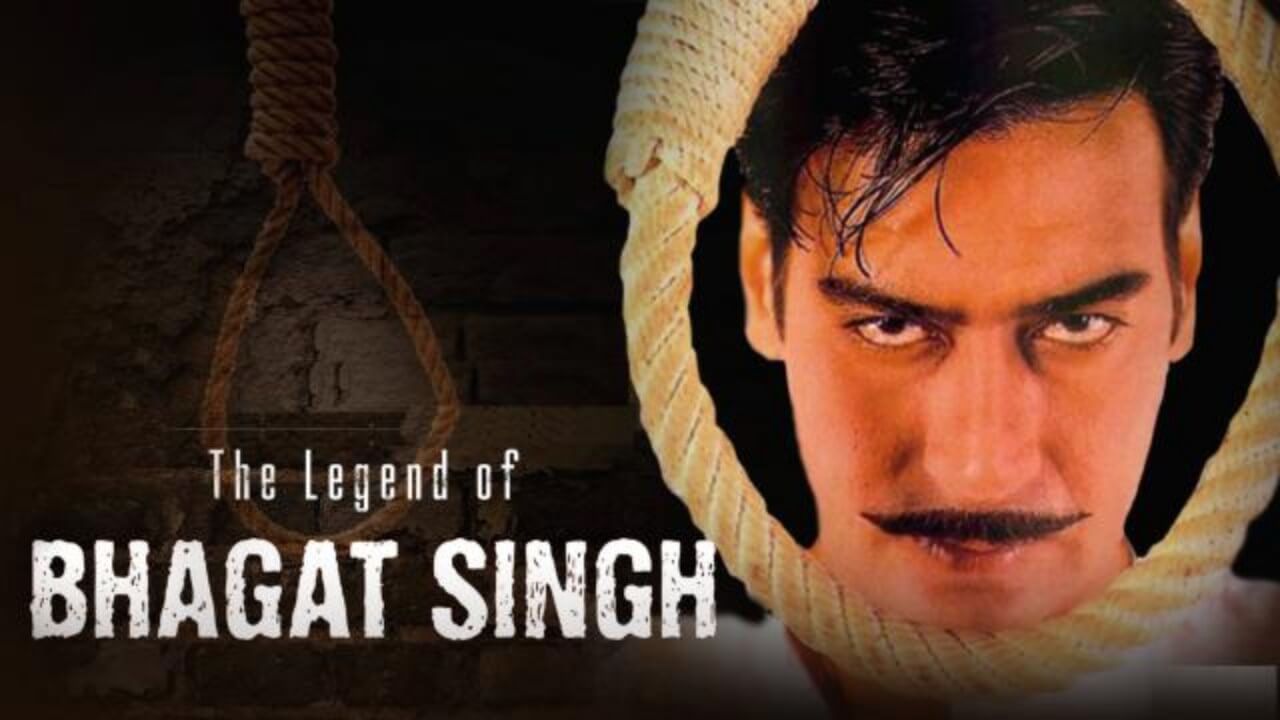The passionate intensity of the Indian freedom hero martyred at the age of 23 — or 24 depending on which of the three versions of the bio-pic one is watching — by laughingly embracing death in March 1931 in pursuit of his dream of an independent India shines in every frame of Santoshi’s film.
The Legend… Bhagat Singh’s mercurial passion for patriotism and the sheer madness of the revolutionary impulse in colours that convey both nostalgia and immediacy. Even as subtle sepia tones seep into the narrative, the rusts and oranges suggest a rugged rage and an incendiary intensity.The sets and locations — including the Taj Mahal in Agra silhouetting the revolutionaries’ zeal deal — are equally apt. Credit must go to cinematographer K V Anand and art director Nitin Desai for reaching a flawless balance between past and its present day re-visitation.
Santoshi’s film fills one with conflicting emotions, all positive and yet pulling in divergent directions. The nuances he imparts to even the simplest of scenes provide remarkable texture to well-known historical facts and figures.
One example is the memorable sequence between Bhagat Singh’s mother (Farida Jalal) and fiancee (Amrita Rao). The scene is a rare moment of female empathy in the boys-day-out narrative. As these women bonded with their love for the doomed man share their sorrow, the viewer is transported into a realm where all immediate concerns, even history and patriotism, acquire a universal resonance.
The brief interlude between Bhagat Singh (Ajay Devgan) and his fiancee is woven with austerity into the factual fabric, leaving brief glimpses and faint footprints on the sands of time.
Anjum Rajabali’s screenplay in no way tampers with history. The film looks unflinchingly at Bhagat Singh’s all-consuming love for his motherland as it extracts romanticism from dry pages of history.
The film’s greatest moments are born in its maker’s imagination. The hypnotic sequence where a fasting Bhagat Singh and his starving allies stave off thoughts of food and death by singing Sarfaroshi ki tamanna… in a jail is profound.
The superbly written and composed song starts as routine inspiration but builds up as a ballad of love, sacrifice and atonement ending with all the “boys” arm-in-arm in a dingy rat-infested cell like a team of rugby players discussing their next move against the opponents — the British colonial rulers.
And yet there is a lot of drama in Santoshi’s take on the freedom fighter — just what the film needed to bring to life the brief but almost romantic life of Bhagat Singh. The drama is high in quality, funny and yet tragic.
For instance, the always-humorous Rajguru (D Santoshi) whoops with delight when told he’ll be allowed to hurl a bomb in Parliament. “Let me die once for my country then I can live in peace,” he says.
One of the initial sequences where Bhagat Singh and his friends take on a team of British boys on the cricket field in college ends with Sukhdev’s words: “Don’t know about the country. But we’re certainly going to get you off this field.”
A subtle homage to Oscar-nominee Lagaan, perhaps?
All the actors fit their roles. Whether it’s D. Santoshi as Rajguru, Sushant Singh as Sukhdev or Akhilendra Mishra as the volatile Chandrashekhar Azad, every actor effortlessly crosses the line between make belief and reality. Even Raj Babbar fills his sketchy role of Bhagat Singh’s father with great emotion.
But the two heroes of The Legend… are Ajay Devgan and the music of A R Rahman.


